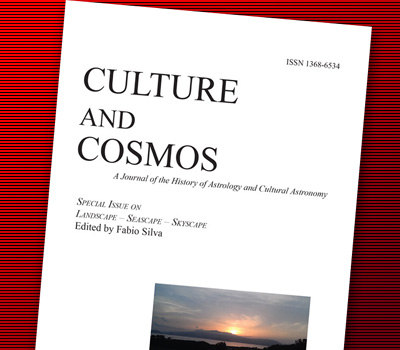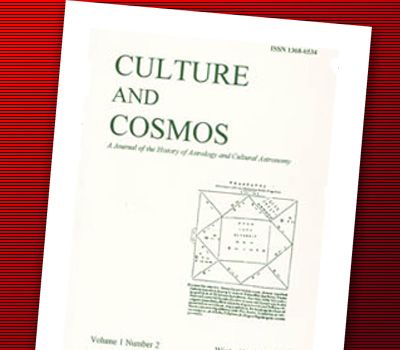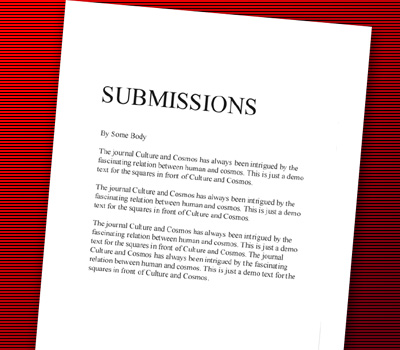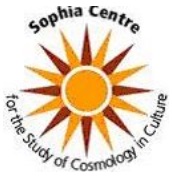We are currently seeking submissions for future volumes of Culture and Cosmos.
Volume 1, No. 2
Editorial
Nick Campion
Historians are often called upon to justify themselves to critics who argue that the past is dead and gone - and irrelevant. The counter-argument, of course, is that that the present can never be understood without a knowledge of the past, but it is often still difficult to argue that such knowledge can be of practical use. A recent question posed on the excellent HASTRO history of astronomy electronic mailing list by Peter Hingley, Librarian at the Royal Astronomical Society, concerning the relevance of ancient astronomical material for contemporary science, produced some interesting observations. It was pointed out, for example, that records of sunspot observations from the past provide evidence for the sun’s behaviour in the present. Brad Schaeffer of Yale University commented that Chinese supernova records have been pivotal in many detailed arguments about supernova remnants and pulsars, and reported that he has made use of ancient Chinese observations of supernova for purposes of measuring the Hubble Constant. Such work should lay to rest doubts about history’s relevance.
Most of us, however, are probably more familiar with the application of astronomical records to an understanding of intellectual history, in which respect the most famous of the Chinese observations, that of the Crab Nebula in 1054, presents us with a so far unresolved historical problem: if the Nebula was apparently bright enough for the Chinese to see during the day, how is it possible that, as far as we know, no European chronicler mentioned it? The only explanations proposed so far are unconvincing. For example it is said that due to a prevailing belief in the perfection of the heavens inherited from the Greeks, an anomaly such as a star shining during the day was simply not noticed. This theory fails to explain why an anomaly such as Halley’s comet was noticed - and recorded in the Bayeux Tapestry - only a decade later. It is also contradicted by the contrary position, set out in the Old Testament, that God sends his warnings through celestial anomalies, stars falling to earth or the moon glowing red, events which were deemed significant precisely because they breached the perfection of the heavens. Thus we might have thought that monastic chroniclers in 1054 would have been primed to spot such an event. The fact that they didn’t may be evidence of the religious and intellectual assumptions of the time. We might therefore conclude that the Nebula was not recorded not because the chroniclers ‘couldn’t see it’, but because they paid little attention to astronomy, which in turn may have been due to a low concern with apocalyptic divine warnings. In this case the recording of Halley’s comet might itself have been the anomaly, and the lack of attention to the Nebula tells us something about mid-eleventh century religion, namely that this was not a time when the end of the world or some other divine punishment was either expected or feared. Thus the very absence of an astronomical record in Europe may tell us something about the eleventh century mind, and European culture at the beginning of the second millennium.









